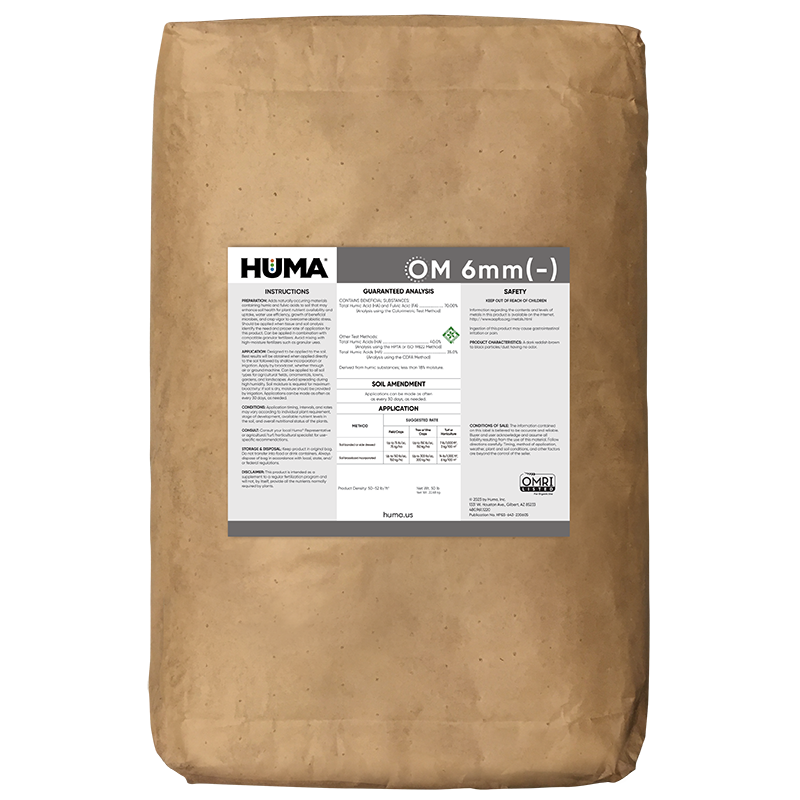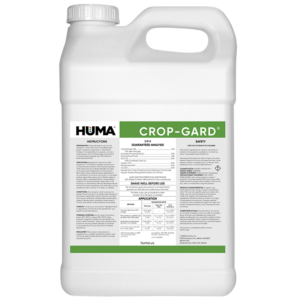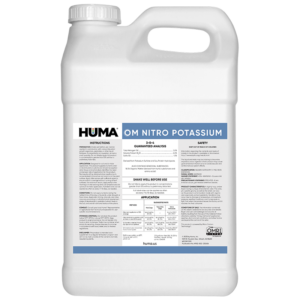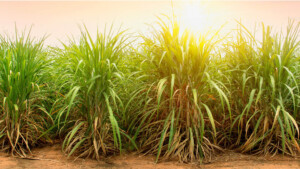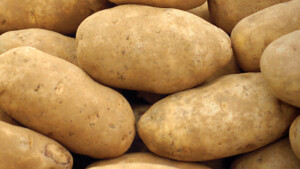OM 6 mm(-)
Benefits of Use:
- Variable granular size promotes even coverage/distribution of humic/fulvic acid for sustainable carbon benefit
- Long-term soil organic-matter building
- Increased water penetration
- Increased flocculation of clays
- Promotes conversion of fertilizer into plant-available food
- Increases soil nutrient mineralization
- Sustainable soil microbial activation
FAQs
Related Products
Related Case Studies
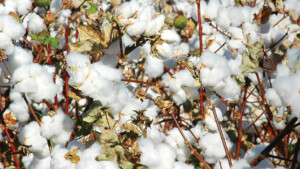
Huma® Fertil Soil® Increases Cotton Yield 16%, With 265% ROI
Background Application of Fertil Soil® to soils in combination with other Huma® fertilizers at various locations previously resulted in crops with improved plant growth and higher yields. Applying Fertil Soil® as a single product application or with grower standard products to soil and plants could also impact results. Objective The focus of this study was

Huma® Program Increases Peanut Yield Under Severe Conditions
Objective This field trial was conducted in order to compare peanut crop yields and return on investment (ROI) obtained when Huma® products were applied in various combinations in comparison with a grower standard program. Materials & Methods This trial on peanut (Arachis hypogaea, Var. GA-12Y) was conducted in Memphis, Tenn., in a randomized complete block
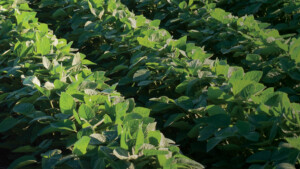
Humic Products Increase Soybean Yield In Iowa
Background Scientific research shows humic and fulvic acids can have a biostimulant effect on plant root growth and mass, nutrient availability and uptake, and crop yield and quality. Objective The objective of this study was to compare and contrast the immediate effects that three types of humic products from Huma®, Inc., have on soybean yield.
Related Blog Posts
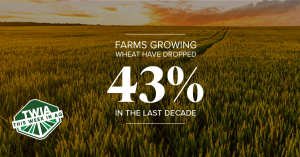
This Week in Ag #60
“They’re on 30s, we’re on 36s.” The cultural practice of row width is often as defining to a farm as the color of tractors they drive. Row width speaks to how far apart you plant your rows. This can vary greatly depending on the crop, geography, agronomic challenges and what the farmer wants to achieve. Here’s a look

Microorganisms: The Living Engine of Soil—Part 2
In Part 2 of this series, we look at Plant-Microbial Interactions.
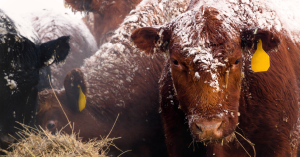
This Week in Ag #48
The popular TV series Yellowstone, along with the western lifestyle craze, has certainly romanticized ranching. It seems like everyone wants to be a rancher, until there’s real-world ranching stuff to do. This week’s bone-chilling Midwestern weather brings back memories. Notice I didn’t say fond memories. When you have livestock, they require care every day. Utility tractors

